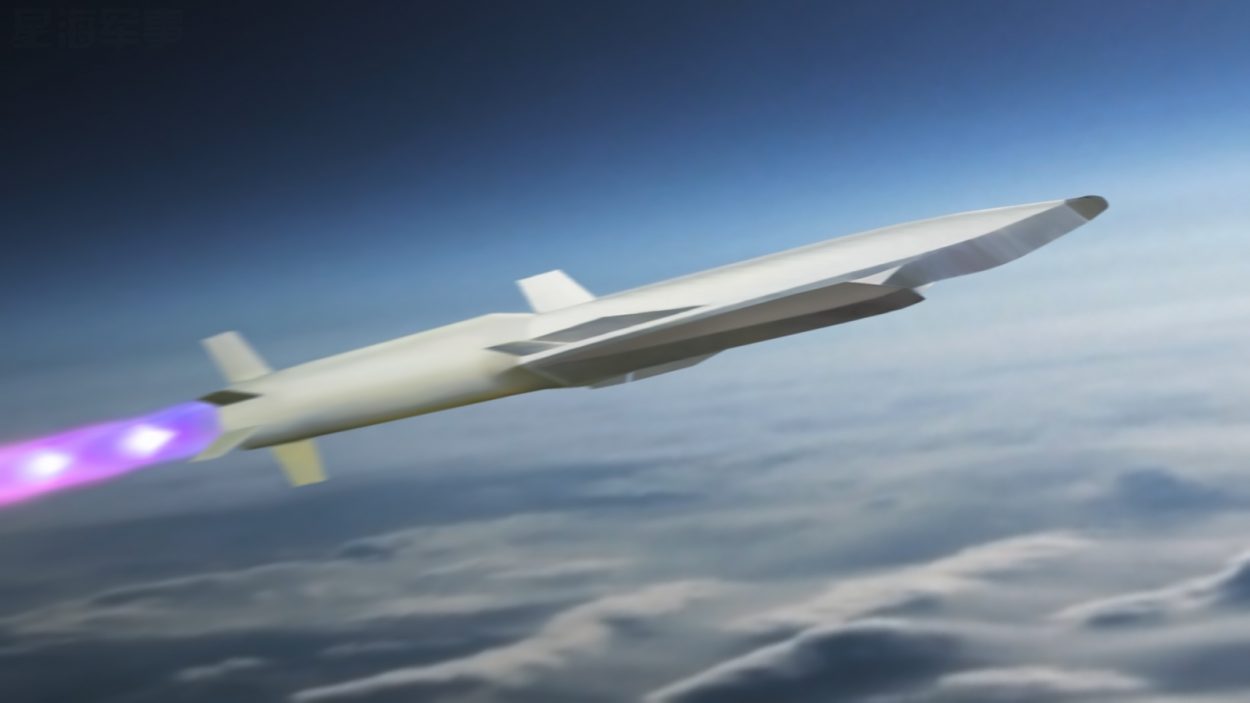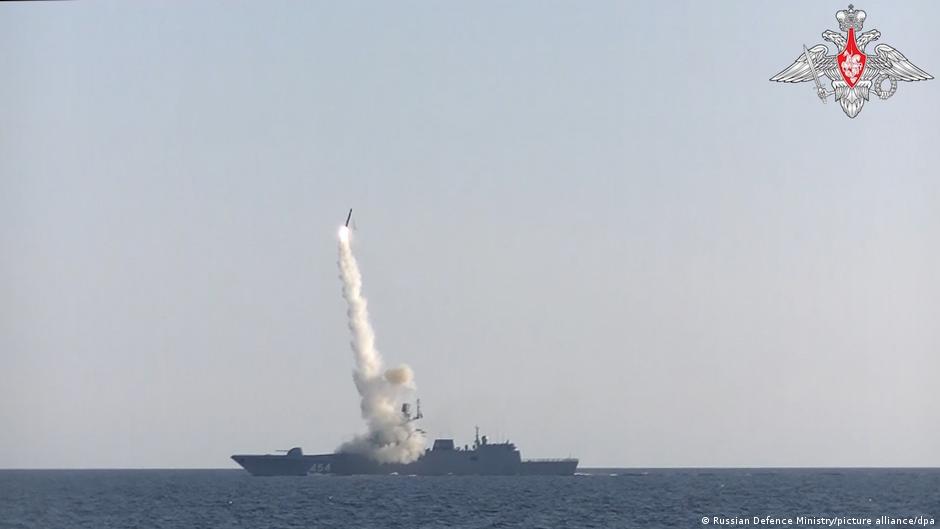Last week Russia’s Ministry of Defense announced that it used hypersonic missiles ‘Kinzhal’ to destroy a large underground warehouse of Ukrainian missiles and other weapons.
Since the attack, the news has created ripples, inviting furor and worldwide disparage in equal proportions. It’s probably the first time that a hypersonic weapon has been used by a country in warfare against another, opening up the incident to a wide array of discussions and alarming the whole world of possibilities that the Russia-Ukraine war is taking a deadlier twist.
Russia’s Defense Ministry has already admitted the fact that it had taken the course of “Dagger”—the English substitution of the word Kinzhal hypersonic aeroballistic missiles, to destroy some key pockets of Ukraine such as the main fuel supply base for Ukrainian armored vehicles in combat areas in southern Ukraine.
According to a Russian news report, this was the first time the country’s military had used them. So, what exactly is Russia trying to portray with this move is the crux of the whole story or the most interesting aspect of this whole event.

How Are Hypersonic Missiles Different?
Any missile that beats the speed of sound by at least five times or travels at speed of Mach 5 or faster—can be classified as a hypersonic missile. It is touted to be an “unstoppable” force with a capacity to wreak havoc at a massive level in a matter of hours while traveling at a rate of approximately one mile per second.
Now that’s not all to it. Hypersonic missiles can also change their direction during a flight, and take cutting-edge maneuvers, while leveraging their unique ability to avoid interception, unlike other kinds of missiles.
This feature makes hypersonic missiles a one-of-its-kind which makes it near impossible to get detected by radars and modern air defense systems.
This makes hypersonic missiles an asset for the country and posits it in a strategically comfortable situation, making it a sought-after addition in the arsenal kitty of aspiring nuclear-capable nations.

As of now, limited countries have access to a technology that can counter such hypersonic attacks—and if reports are true, the Russians are a pioneer of this with their celebrated S-500 Prometey (or Prometheus).
The Prometheus is a surface-to-air missile that can detect hypersonic missiles among other aerial threats. According to RAND Corporation, a US policy think tank, hypersonic missiles are a brand new addition to the list of weapons that are capable of both maneuvering and flying at a super speed rate of about 5000 kilometers per hour.
What Does This Move Tell Us About Russia?
Since day one of this war, Russia had been quite vocal about its agenda and intentions and made it pretty clear that no leniency will be followed whilst countering a threat to its national interest and security. The use of hypersonic missiles may be aimed at asserting this intention.
It may have been used to send out a message that Moscow at no cost will entertain any threat from Ukraine and is even willing to convert it into a destructive war. In other words, the war is going to get bloodier.
However, Russia’s stakes are not under threat just by a small country of Ukraine. Its Cold War rivalry with Washington, though long buried officially, seems to be rearing its ugly head of late.
To make it more specific and direct, Russia is trying to polish its image of a nuclear weapon state and is in a mood to display some military mileage in order to give a warning to its other heavyweight opponents such as the US.
According to Congressional Research Service Memo (CRS Memo), although the US itself is a prolific weapon developer and has been testing hypersonic missiles for decades, fails to match up to the Russian and Chinese versions of hypersonic weapons.
The US had also launched a two-stage rocket in 1949 that attained Mach 6.7 under project Bumper. Despite this, most US-made hypersonic weapons are not equipped with an in-built mechanism to be used as a nuclear warhead.
While there are still some controversies regarding hypersonic weapon usage, Russian reportage claims it in a haughty demeanor. If one looks at the history of Russian military development, hypersonic weapons have placed Russia in an advantageous position, and it has been nurturing these weapons as a dream project all these years.

Key Challenges
With great powers come great responsibilities, and sometimes, challenges. Experts suggest that friction is one of the main challenges of this weapon as the temperatures can soar up to 2,200 degrees Celsius, for which highly powerful materials that can withstand these high temperatures are needed.
There may be some bottlenecks in terms of communication as well. And while they can be excellent devices in terms of maneuverability, this can put tremendous pressure on their internal structures.
This is a time when countries are busy collecting missiles and weapons like souvenirs for showcasing military power. Nations are already on a path to equip their weapons with state-of-the-art technology and cutting-edge modern innovations; so they can outsmart their opponents.
There is little doubt that the future belongs to technologies and weapons that are smart, ultra-fast and are designed to target and wreak havoc within a short span of time. In other words, we are creating a future, which plans to destroy the future.
Hypersonic Weapons And India
CRS Memo also states that while Russia, the US, China are the title holders of this weapon, emerging nations such as Australia, India, France, Germany, and Japan are queuing up in the line to acquire this ‘wonder weapon’.
As of now, India operates around 12 hypersonic wind tunnels and is already in a position of testing a speed of up to Mach 13. According to reports, it is also in the process of creating an indigenous dual-capable hypersonic cruise missile as a part of its ambitious Hypersonic Technology Demonstrator Vehicle (HSTDV) program.
India also entered the elite club of countries having tested the technology with its Mach 6 scramjet in June 2019 and September 2020. The test was carried out by the Defence Research and Development Organisation (DRDO).
While the debates on the ethical purpose of the weapon will continue to gain some steam in the international arena, this move is bound to give Russia an upper edge in its ongoing tensions with the US-led NATO.
The Ukraine invasion has already given jitters to the US and the nature of current geopolitics is going to take massive turns.
For India, it can take lessons from its old friend and learn these war tactics as it is surrounded by two hostile neighbors, with one of them being already ahead of it in terms of this “unstoppable” entrant in the nuclear realm—China.

Russia’s Hypersonic VS US’ Interceptors
So, what has the US got to fear about Russia’s hypersonic missiles, and what’s so special about them? The reason for Russia to bolster its military arsenal is simply to match it up with US’s superiority in terms of its massive size and technology.
Let us take, for instance, Russia’s 3M22 Zircon. The missile flies at a massive speed—up to Mach 6 and that too at a low atmospheric-ballistic trajectory. This and a few more of Russia’s cutting-edge missiles are giving the US sleepless nights as its interceptors would have only a few seconds to respond to Russian threats.
The hypersonic missiles fly with an advanced fuel that attains a range of up to 1,000 kilometers, as per the Russians. As per an article in military.com, the missile flies at such a rapid pace so fast that a cloud of plasma is formed with the air pressure in front of the weapon, this absorbs the radio waves and thus renders it undetectable to active radar systems. This makes this line of weapons extremely exclusive to Russia.
- Written by Pallavi Patra/EurAsian Times Desk
- Contact the author at etdesk@eurasiantimes.com
- Follow EurAsian Times on Google News




